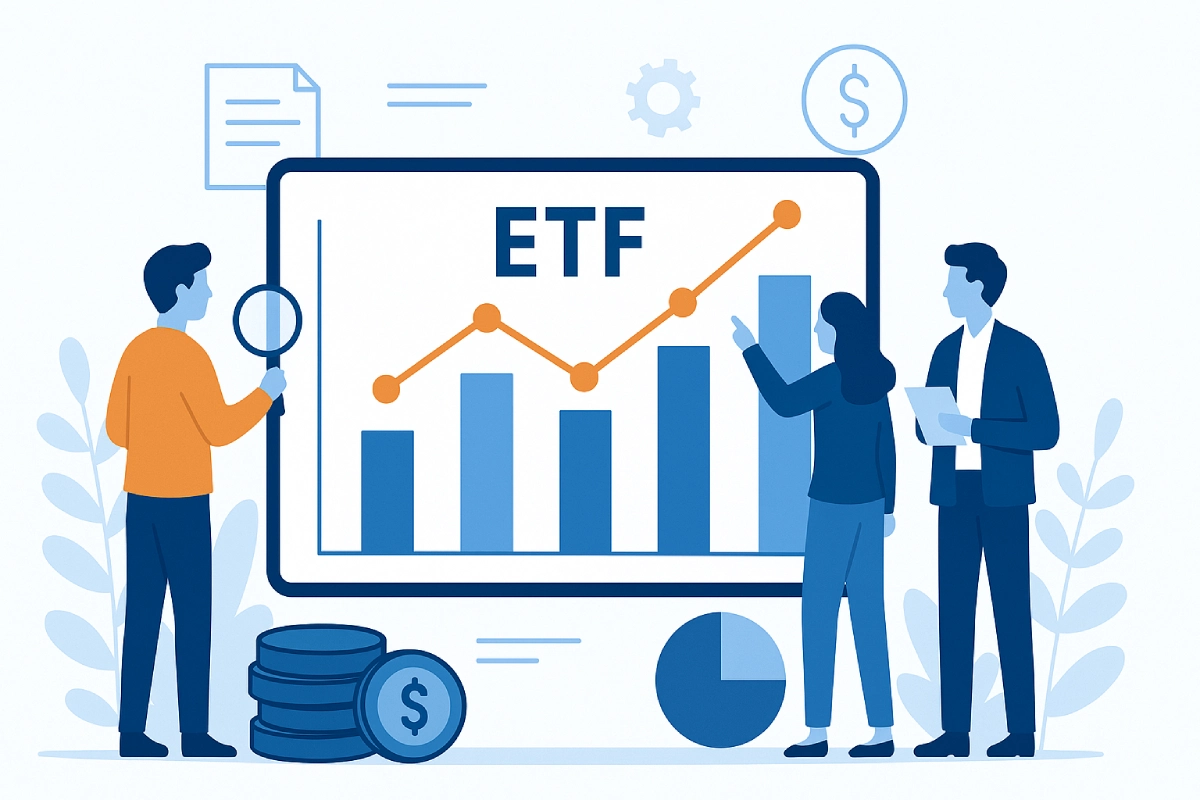In a market saturated with thousands of exchange-traded-funds (ETFs)—each offering varying exposures, structures, and costs—thoughtful due diligence is essential. For allocators, advisors, and direct investors alike, evaluating an ETF is about far more than past performance. It’s about understanding the mechanics, risks, and alignment with portfolio objectives.
This guide outlines the key dimensions investors should assess before allocating capital to any ETF.
1. Structure and Value Alignment
At the core of every ETF lies its Net Asset Value (NAV)—the market value of its underlying holdings divided by the number of shares outstanding. NAV serves as a reference point for assessing whether an ETF is trading at fair value. Bear in mind however, that only authorized participants (APs), who are registered broker-dealers responsible for creating and redeeming ETF shares in the primary market, may engage with issuers directly.
While NAV is typically published at the close of each trading day, investors should monitor how closely an ETF’s market price tracks its NAV, especially in volatile or less-liquid markets. The stock exchanges on which the ETF shares trade are referred to as the secondary market, and this is where they are traded among investors. Persistent premiums or discounts may indicate structural inefficiencies or issues with the liquidity of the underlying ETF basket of holdings.
2. Pricing Behavior and Execution Dynamics
Understanding how an ETF trades is just as important as understanding what it holds.
- Bid-Ask Spread: A narrower spread implies tighter market efficiency and lower execution costs. ETFs with wide spreads may be thinly traded or lack sufficient market-maker support.
- Premiums and Discounts: ETFs can temporarily deviate from NAV due to supply-demand imbalances. While these are often arbitraged away in liquid markets, sustained dislocations merit scrutiny—especially in fixed income, emerging markets, or niche strategies.
Investors seeking to execute large orders should also evaluate average daily trading volume and on-screen depth to avoid unnecessary slippage. Slippage is the difference between the expected price of a trade and the actual price at which it’s executed, often occurring due to market volatility or liquidity issues.
3. Expense Ratio and Fee Transparency
The expense ratio represents the annual cost charged by the ETF issuer as a percentage of assets under management. While seemingly minor, these costs compound meaningfully over time—particularly in long-term strategies or large allocations.
- Passive ETFs in major asset classes often carry fees of 0.03%–0.10%.
- Thematic or actively managed ETFs may justify higher fees if they offer differentiated exposures or risk-adjusted outperformance.
Investors should also be aware of hidden costs, such as trading spreads or securities lending revenue not passed back to shareholders. Information about these costs can be found in fund financial reports made available to shareholders semi-annually.
4. Historical Performance and Risk Profile
While past performance is not predictive, it does provide context.
- Analyze performance consistency across multiple time periods.
- Compare results relative to the ETF’s stated benchmark.
It’s also critical to assess volatility. An ETF that materially outperforms peers with higher risk may not align with all investors’ mandates or tolerances. Understanding beta relative to broader indices can further inform how the ETF fits into the risk budget. Beta is a measure of the ETF’s volatility or systematic risk relative to a benchmark index, like the S&P 500, indicating how much its price tends to fluctuate in line with market movements.
5. Holdings Transparency and Sector Exposure
An ETF’s underlying holdings dictate its true exposures. Investors should review:
- Top holdings: Are returns driven by a concentrated subset of securities?
- Sector/industry allocation: Is there an unintended overweight to cyclical or highly-volatile sectors?
- Geographic distribution: Especially relevant in global or emerging market funds.
Transparency is a hallmark of the ETF wrapper. The best issuers publish daily holdings and maintain clear methodology documentation. This visibility allows investors to conduct meaningful overlap analysis across portfolios and avoid concentration creep by investing in multiple ETFs with substantially similar holdings.
Additional Considerations
- Tracking Error: How closely does the ETF mirror its stated index or strategy? Tracking deviation may stem from rebalancing (when the ETF is periodically adjusted to track its index) lags, illiquidity, or structural frictions.
- Issuer Reputation: Operational reliability, capital markets expertise, and experience managing ETF products matter—particularly in moments of market stress.
- Tax Efficiency: The in-kind redemption mechanism typically limits taxable events. That said, active ETFs or those holding non-U.S. securities may still distribute gains which are taxable to shareholders.
Conclusion
Choosing an ETF is ultimately an exercise in thoughtful consideration after reviewing ET offering materials (prospectus) and other information about the ETF’s investments or investment theme. Sophisticated investors evaluate not just the investment thesis, but also the structure, efficiency, and fit within a broader asset allocation framework.
The ETF vehicle can be powerful, but its benefits are only fully realized when investors apply the same rigor they would to any other investment. Assess costs, understand exposures, monitor performance drivers, and stay attuned to market dynamics. In a market defined by innovation and the wide spread adoption of certain investment products, like ETFs, discipline remains the most valuable edge.
Important Information Related to this Article
This material is for informational purposes only and contains the opinions of the author, which are subject to change, and should not be considered or interpreted as a recommendation to participate in any particular trading strategy or deemed to be an offer or sale of any investment product, and it should not be relied on as such. This material is not intended to provide investment recommendations. This material represents an assessment of the environment discussed at a specific time and is not intended to be a forecast of future events or a guarantee of future results. Readers of this information should consult their own financial advisor, lawyer, accountant, or other advisor before making any financial decision. Past performance is not indicative of future results. You cannot invest in an index.

